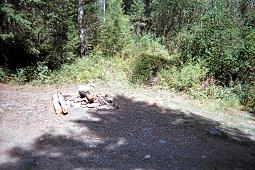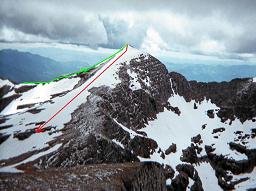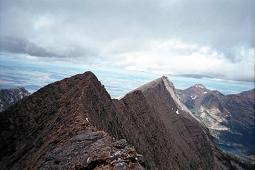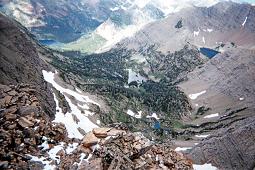
just behind a fire ring.
Date: August 23, 2010
Author: Adam Helman

|
|
The unmarked trailhead is just behind a fire ring. |

|
|
East Saint Marys Peak is climbed to reach Peak X. My ascent route is green, the descent in red. |

|
|
Peak Y is to the left in this view from Peak X's summit. |

|
|
View 'straight down' from Peak X's summit to what must be a rarely visited valley. |